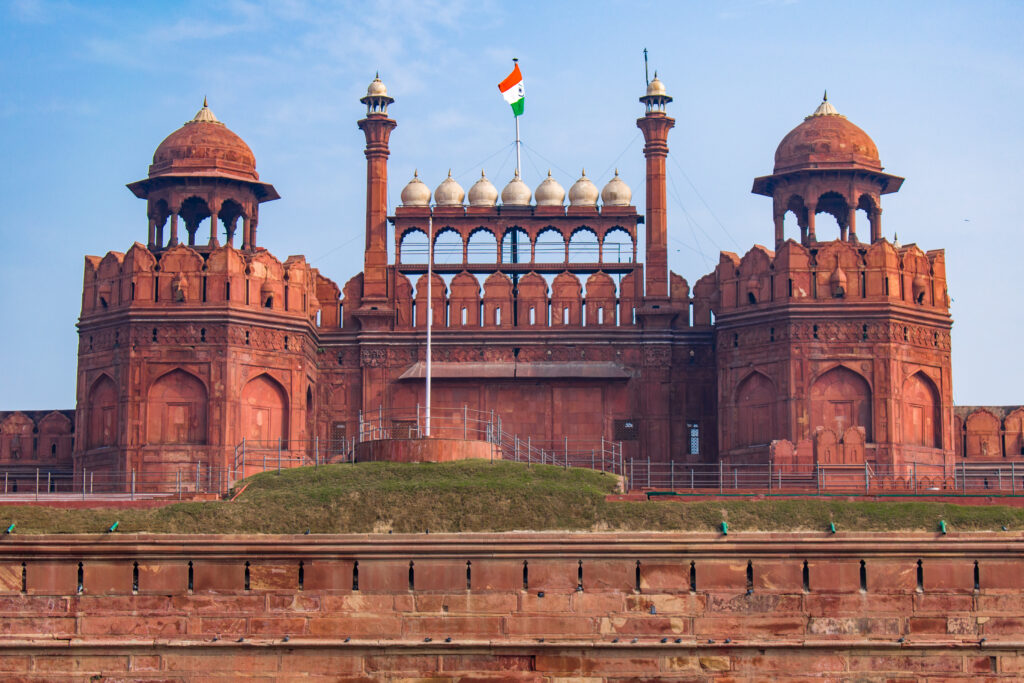Take a fascinating journey through India’s Golden Triangle that covers the iconic cities of Delhi, Agra, and Jaipur. Travelers wishing for a historical, architectural and cultural experience, this travel circuit simply fulfils your crave.
Each city present in this circuit astonishes curious travelers and history buffs with its rare ancient monuments. Choosing customized India Tour Packages ensures that you do not miss any of important places to explore.
Let’s explore the top historical monuments, from the grand forts and palaces to intricately designed mausoleums and colorful markets.
1. Red Fort, Delhi
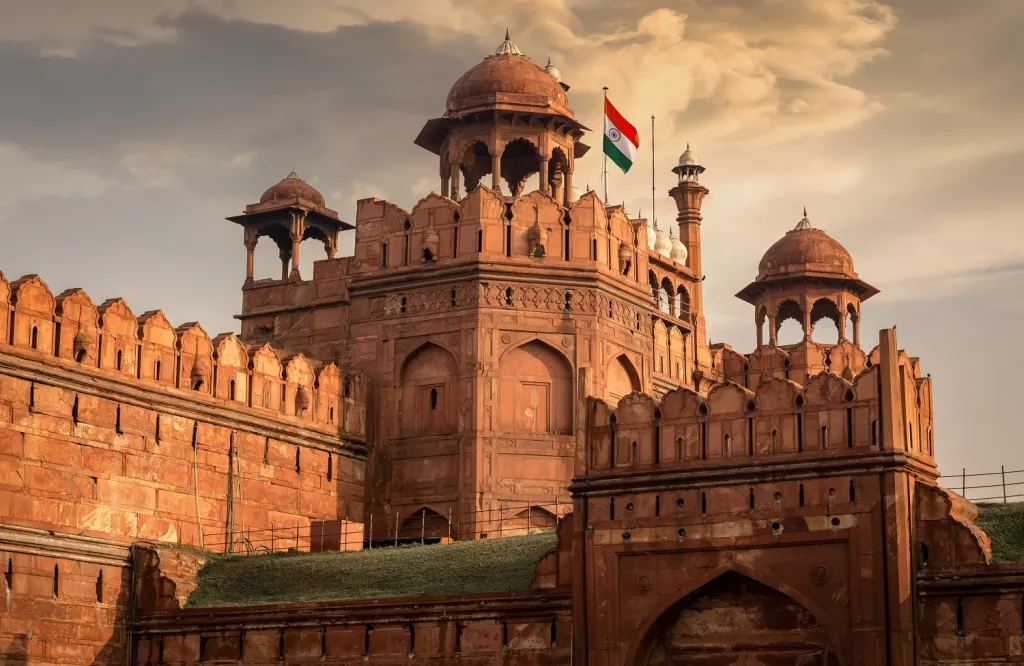
One of the famous monuments in the Golden Triangle India Tour is the Red Fort (Lal Qila) in Old Delhi. It was built by the Mughal Emperor Shah Jahan in 1648, and showcases the power of the Mughals in the past. What amazes is its architectural design; the entire structure is made of red sandstone with intricate carvings on the walls.
The boundary wall of the Red Fort stretches over two kilometers. Within the complex of the fort, the main highlights are Diwan-i-Aam, Diwan-i-Khas, Rang Mahal (popular for colorful mirror works), and Moti Masjid.
Due to its stunning architecture and rich history, it is referred as a UNESCO World Heritage Site. What’s more fascinating is that at present, every year during Independence Day, the National Flag is hoisted by the Prime Minister of India.
- Qutub Minar, Delhi
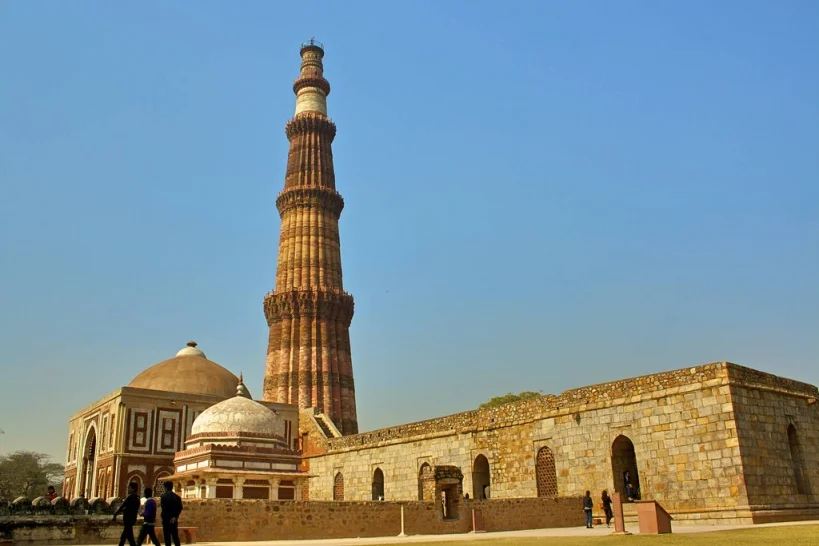
You will be excited to know that the tallest brick minaret in the world is in Delhi, India. The Qutub Minar stands at a height of 73 meters and is one of the earliest Islamic structures. This magnificent Indo-Islamic architecture was built under the supervision of Qutb-ud-din Aibak in the 12th century. He was the founder of the Delhi Sultanate dynasty. Within the complex of the Qutub Minar, there is a mosque, the Iron Pillar, tombs and other ancient ruins.
One of the interesting facts of the Iron Pillar is that it has rust-resistant composition and has retained its original form for centuries now.
The Qutub Minar is also designated as a UNESCO World Heritage Site due to its splendid architecture, showcasing the skills of the engineers of the medieval times.
All customized India Tour Packages, ensure to include Qutub Minar in the itinerary. Know about the captivating stories revolving around it.
- Humayun’s Tomb, Delhi
Another architectural wonder that’s grabs the attention of the global travelers is the Humayun’s Tomb. It is often referred to as the originator of the Taj Mahal. This monument was built by Empress Bega Begum (who was the wife of Humayun and Akbar’s mother) in 1570.
Exquisitely constructed following Persian and Mughal styles. What captivates the attention of the visitors are its landscape gardens, symmetrical design and high-arched portals.
One of the interesting facts about this tomb is that it is not only resting ground of the Mughal Emperor Humayun but the first garden tomb in India.
- India Gate, Delhi
Although it is a modern structure in comparison to other monuments of the Golden Triangle India Tour, but it has great significance. This is a War Memorial which was built to pay tribute to the 70,000 Indian soldiers who died during World War I.
Under the arch is the eternal flame dedicated to the fallen soldiers who sacrificed their life for the country. This national structure was designed by Sir Edwin Lutyens and stands tall in the heart of New Delhi.
- Taj Mahal, Agra

What tops the list of the Golden Triangle India Tour is the Taj Mahal, the crown jewel of India. This stunning white marble monument was built by Shah Jahan in the memory of his wife Mumtaz Mahal. Due to its ethereal beauty and rare architectural design is designated as a UNESCO World Heritage Site and is one of the Seven Wonders of the World.
Highlight of the Taj Mahal is its intricate marble carvings bejeweled with gems, calligraphy, and symmetrical gardens.
An interesting fact not to miss: The Taj Mahal changes its colors, according to the movement of the sun. It offers magical views at sunrise, sunset and in the afternoon.
Suggested Tours

Golden Traingle Tour of India
6 Nights - 7 Days
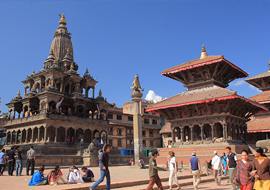
Nepal Tour
8 Nights - 9 Days

Orissa Tribal Tour
11 Nights - 12 Days

Central India Tour
12 Nights - 13 Days
- Agra Fort, Agra
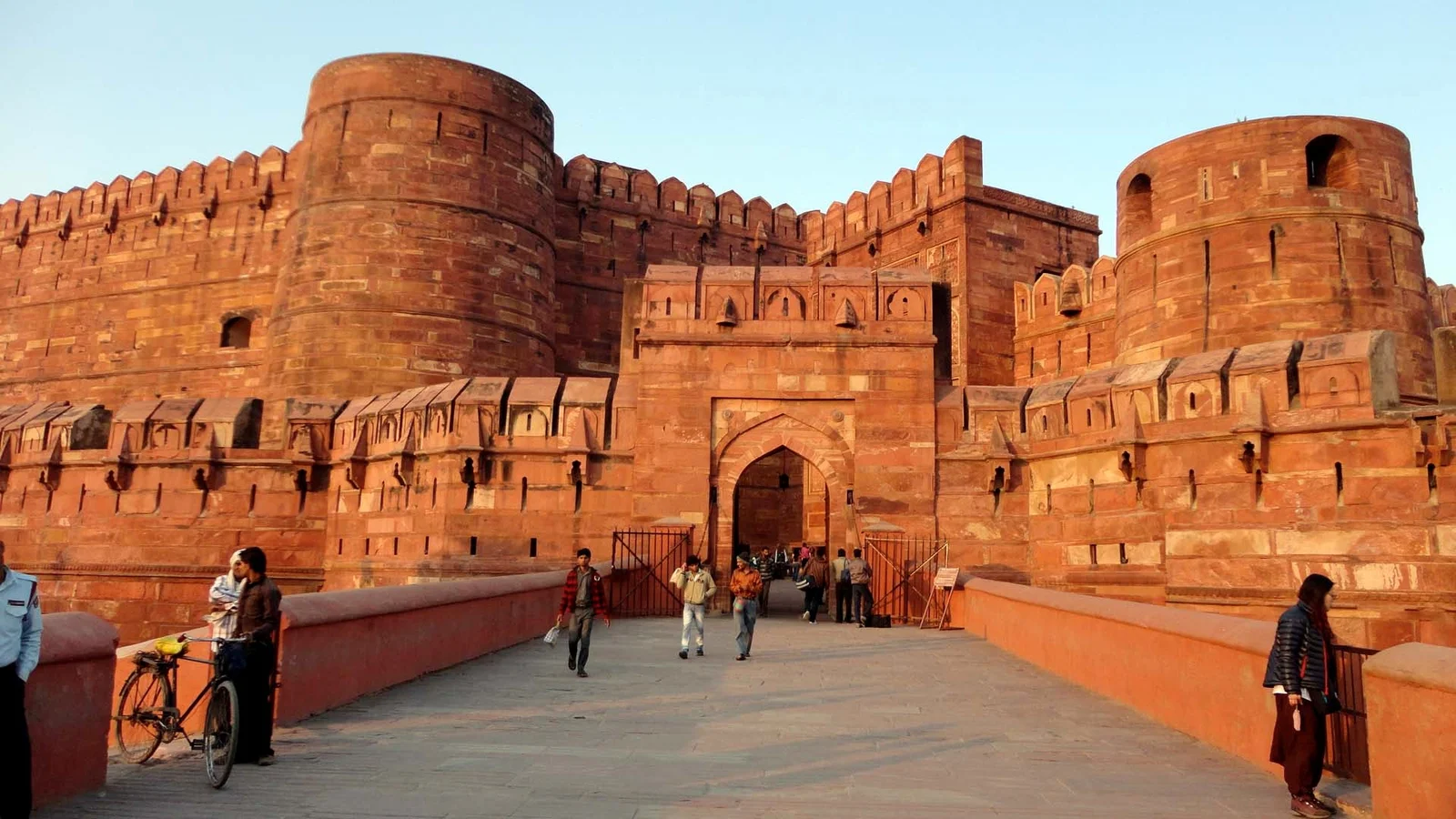
Did you know the Agra Fort was the former residence of the Mughals for centuries? It is located just 2.5 km away from the Taj Mahal. Like all Mughal structures, this fort is also built in red sandstone, following Mughal architectural style.
It was built by Mughal Emperor Akbar in 1565, and served as the residence and the main administrative center of the Mughals. It remained the capital of the Mughals until it was shifted to Delhi by Mughal Emperor Shah Jahan.
Due to its splendid architectural style and importance, it is listed as a UNESCO site. Within the complex of the fort there are important highlights like the Diwan-i-Khas, Diwan-i-Aam, Sheesh Mahal, Khas Mahal, and Jahangir Palace.
From the Agra Fort, you can enjoy the breathtaking views of the Taj Mahal, sitting right beside the Yamuna River.
An interesting fact about this fort: It was this fort that Aurangzeb who was Shah Jahan’s son kept him prisoner till he passed away.
- Fatehpur Sikri, Near Agra
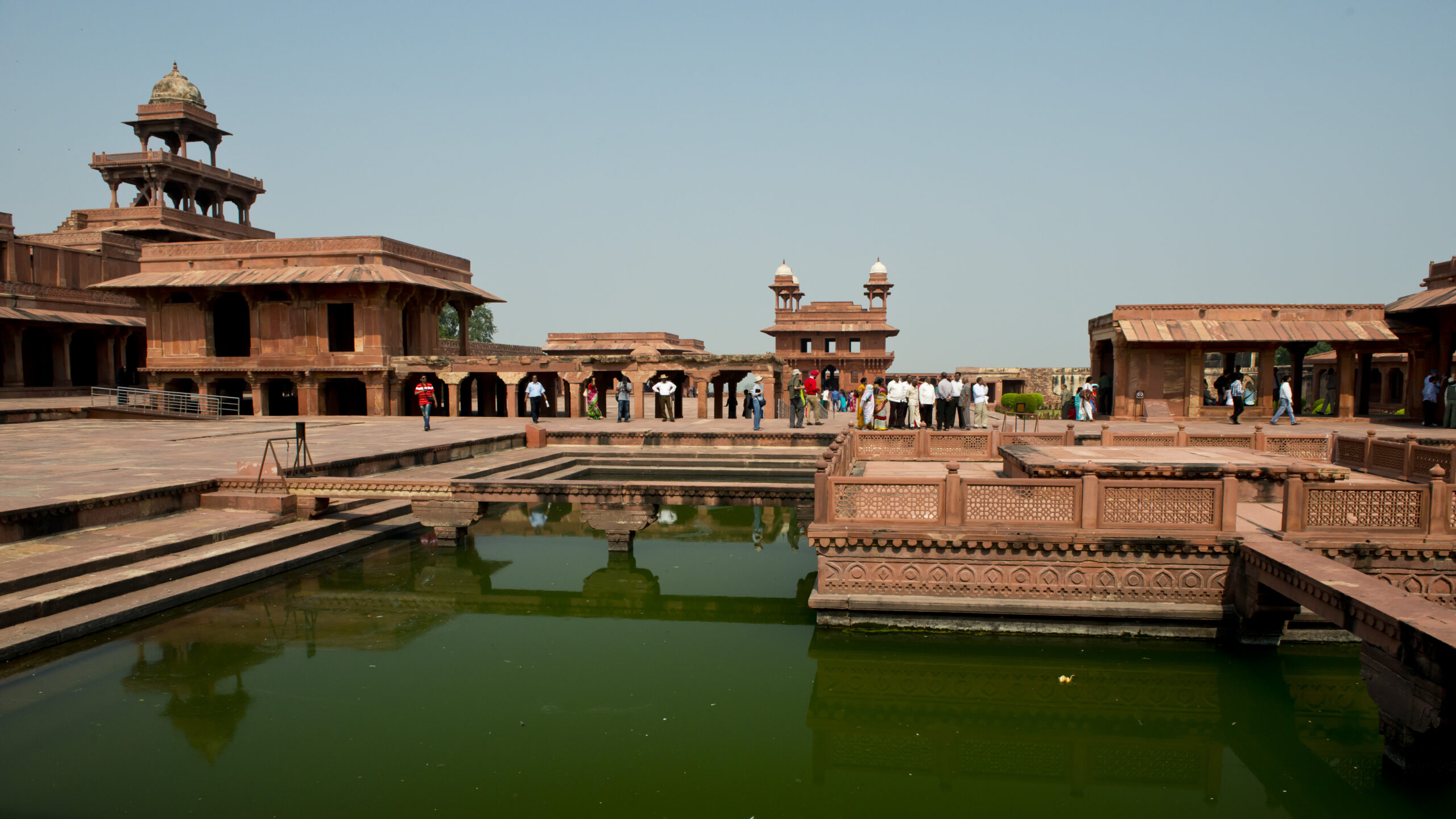
Just a short drive from Agra and you land in the abandoned city of Fatehpur Sikri. This enchanting city is located on a hilltop offering beautiful views of the surrounding.
Fatehpur Sikri was built by Mughal Emperor Akbar in the late 16th century, and remained the capital of the Mughals for two years. The capital was shifted back to Agra as there was scarcity of water in the region.
Within the complex of this deserted city are important highlights like the Buland Darwaza (the highest gateway in the world), tomb of Salim Chishti, Diwan-i-Khas, Panch Mahal, and Jama Masjid.
In your India Tour Packages don’t miss to visit the abandoned city of the Mughals that showcases its astonishing architectural splendor.
- Hawa Mahal, Jaipur
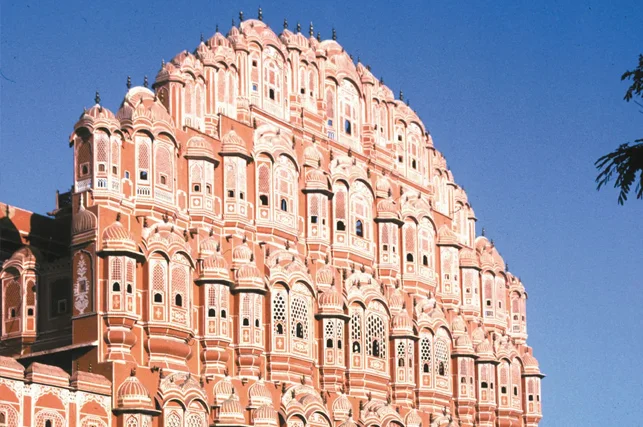
When you reach in Jaipur, you will see the Hawa Mahal, popularly known as the Palace of Winds. This stunning five-story structure was built by Maharaja Sawai Pratap Singh in 1799.
What grabs the attention of this palace? It is its 953 honeycomb style windows with intricate carvings. This structure was especially built for the royal ladies. They would sit behind the windows without being noticed and watched the events on the streets.
- City Palace, Jaipur
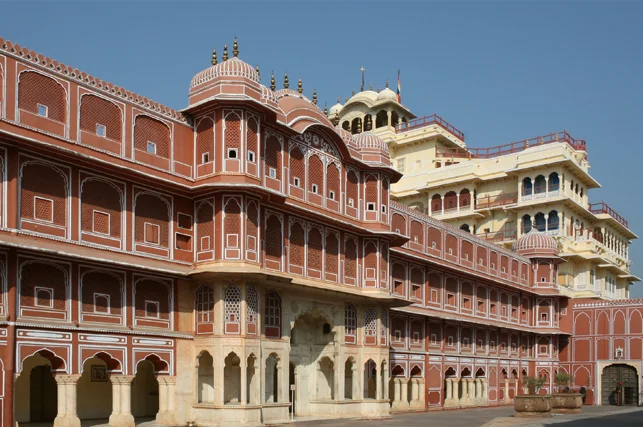
It is the main residence of the royal family of Jaipur, located in the main city center. It was built by Maharaja Sawai Jai Singh II who was the founder of Jaipur. The architectural design of the fort comprises of both Mughal and Rajasthani architecture. Within the complex of the palace are courtyards, museums, gardens, and halls. A part of it is opened for the public as a museum to see the royal heritage of the region.
- Jantar Mantar, Jaipur
Did you know it is the largest sundial in the world? Yes the Jantar Mantar, an astronomical instrument to study the celestial bodies. This observatory built by Maharaja Jai Singh II in 1734. Due to its rare architectural design and importance it is designated as a UNESCO World Heritage Site.
- Amber Fort, Jaipur
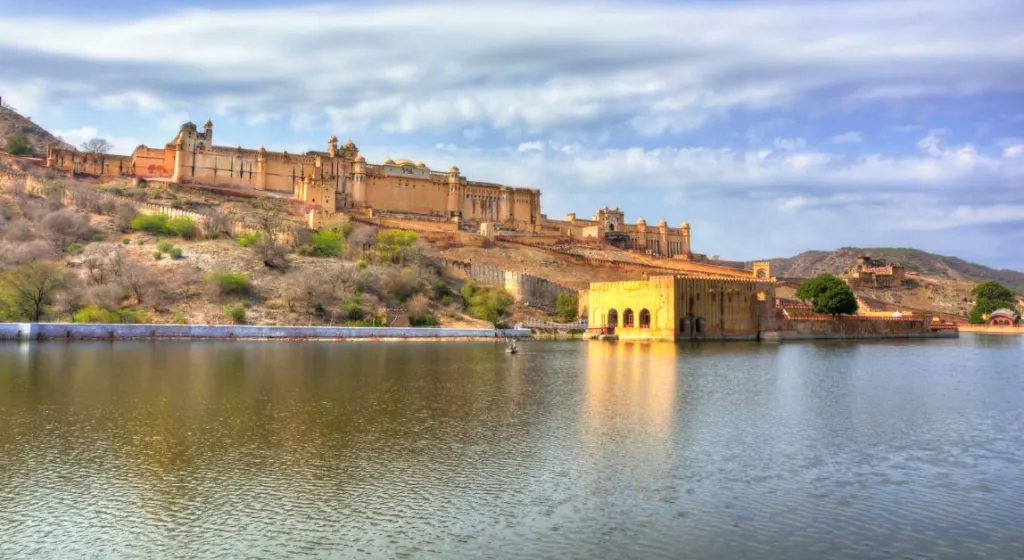
Not to miss visiting. This magnificent fort is located on a hilltop overlooking the surroundings. The architectural design of the fort is Mughal and Rajasthani and is made of red sandstone and marble. It has cobbled paths, large courtyards and ramparts. Within the fort complex, the main highlights are the Sheesh Mahal (Mirror Palace), Sukh Niwas, and the Diwan-i-Aam.
Don’t you find it fascinating – lets us connect you to India’s rich history and make you feel like you are walking through living history of the bygone era with India Golden Triangle Tour.

